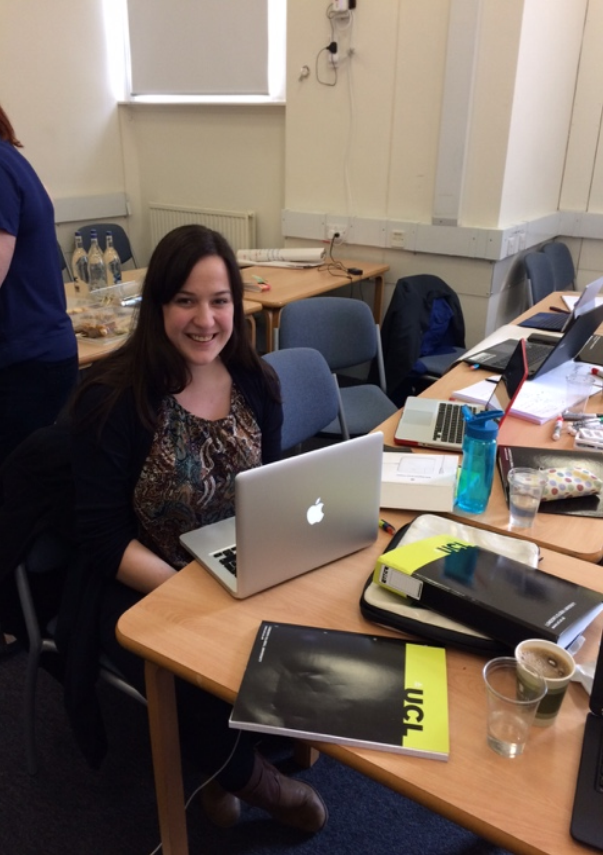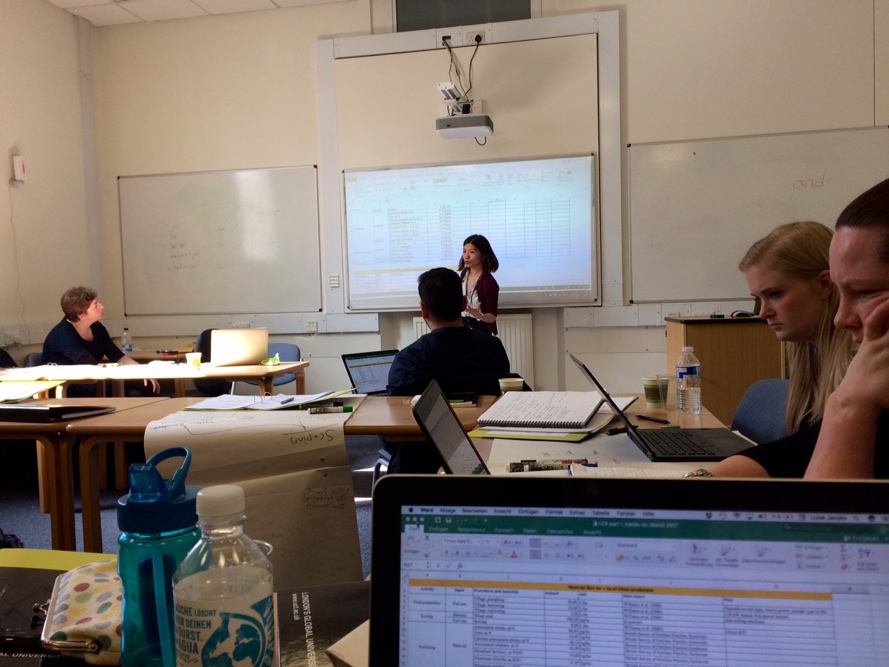- Graduate School GLOMAR
- PhD student reports
- Other activities
- Luise Heinrich
Luise Heinrich
Report of GLOMAR PhD student Luise Heinrich about her participation in the course "Life Cycle Assessment (LCA): From Theory to Practical Application at the University College London, UK, from March 27-28, 2017.
Assessing the sustainability of products requires a thorough understanding of their impacts on the environment, economy and society. Life Cycle Assessment (LCA) provides the methodological framework to identify, quantify and evaluate the environmental impacts associated with the individual stages of a product’s entire life cycle, including the extraction of raw materials, the manufacturing process, the use phase and ultimately the disposal or recycling of waste material. A full LCA, covering is therefore termed “cradle-to-grave”. LCAs which cover only a selection of stages or a single phase are called “cradle-to-gate” or “gate-to-gate”, respectively.
The comprehensive short course taught by Dr. Aiduan Borrion, Dr. Mairi Black and Dr. Isabela Butnar on the University College London’s main campus, provided an introduction to LCA methodology and its practical application. The structure of the course largely followed the typical structure of an LCA and for each component comprised an introductory lecture followed by a practical exercise, for which we focused on a case study on improving the sustainability of growing a type of winter wheat in the UK. We started with the “goal and scope definition”, which marks the start of every LCA and is concerned with defining study objectives, target audiences, system boundaries and functional units. The second part covered the “life cycle inventory” which describes the process of data collection. In this part, we learned that LCAs often require large quantities of data, a lot of which are o available through commercial databases, academic literature or similar sources. It is also possible to collect data by means of interviews. The third part of the course, “life cycle impact assessment”, was concerned with connecting the data on system inputs and outputs collected in the previous step to the environmental consequences they cause. This part of the LCA is usually done with the help of specific LCA modeling software, as the interconnections between inputs/outputs are very complex and involve large quantities of data. The last step of LCAs cover the interpretation and communication of the results.
The course was very helpful as it not only provided a comprehensive overview of the LCA methodology but also covered its practical application and compared several database and software options. Although we mainly worked on a pre-selected case study provided by the instructors, we also had the chance to discuss our own projects with the instructors, which was very helpful. The course also provided the opportunity to learn about the diverse applications of LCA.
I would like to thank GLOMAR and Jacobs University Bremen for providing the financial support that allowed me to participate in the course “Life Cycle Assessment (LCA): From Theory to Practical Application” at the University College London.




